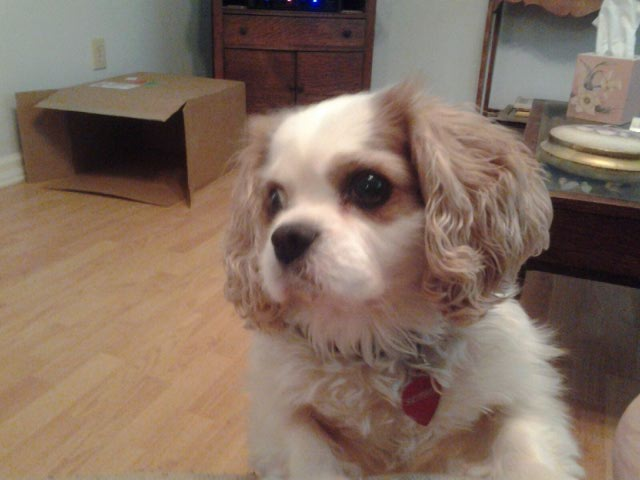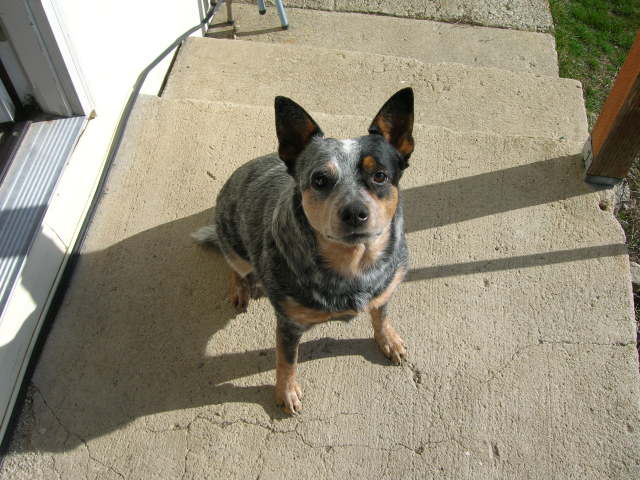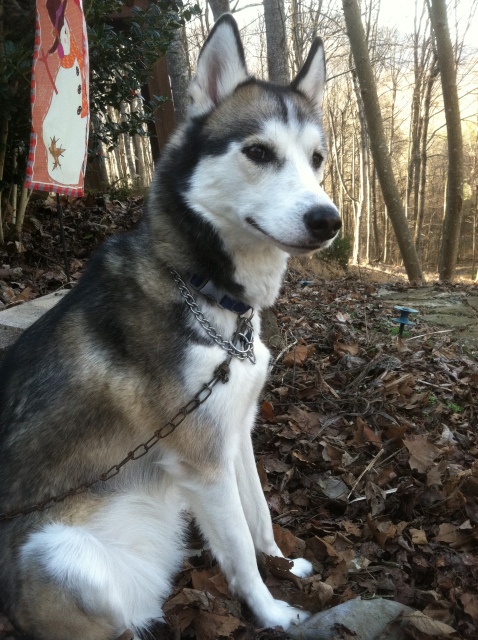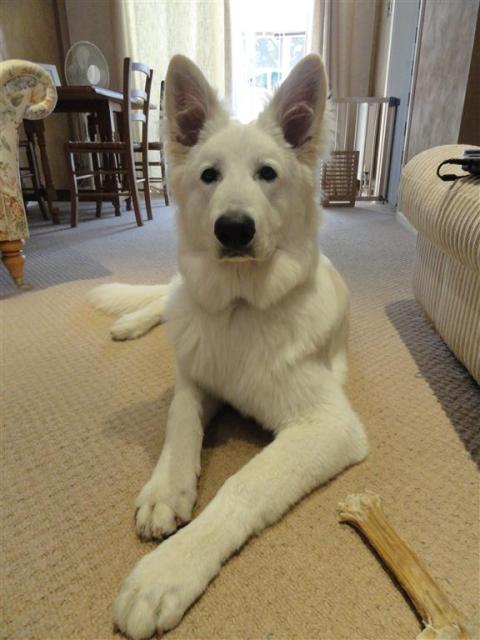QuestionWe adopted an Italian Mastiff (Cane Corso) dog almost a year ago. She is everything you could want in a dog. Obedient, patient and gentle. Very well behaved around strangers and walks well on a leash, until she sees another dog.
She is not aggressive, and plays well. However she just gets so excited to see other dogs that she forgets all her manners and lunges excitedly.
We live in a town that is very discriminatory towards dogs like her though, pitbulls are illegal and anything that slightly resembles one is attacked.
We have been verbally assaulted and she was once even physically assaulted on a walk. I have had the authorities called on her and had to verify her breed and temperament numerous times. Through all this she has been a gem. Beautifully behaved and controlled.
So you see it is imperative for her to not get so excited around other dogs as it gives the wrong impression.
We are not welcome at the local dog park for socialization due to her appearance, and I don't know too many other people with dogs that are not afraid of her :(
She is fine with our other dogs but that does not seem enough to curve her of her bad manners.
I would love some advice on how to calm her down around strange dogs so that she ignores them rather than lunges to play. She also weighs 95 lbs so my arm would also appreciate your advice :)
Thank you!
AnswerGreetings, and thank you for contacting All Experts!
I am very familiar with the majestic Cane Corso breed having lived in Italy for many years. As a descendant of the ancient roman Molossus, the Corso breed boasts Mediterranean beauty and nerves of steel. Too bad people are often unable to recognize that this docile breed has lived side by side with humans and children for centuries, and its friendliness and patience makes it also a great candidate for therapy work.
Yes, you really need to work on controlling her behavior around other dogs. First and foremost to prevent yourself from potentially getting hurt, but also to protect her from unjust breed stereotyping. My first piece of advice would be to enroll her in classes. Classes are not for training a dog to simply sit, lay down and stay. They are a way for dogs to learn to stay under control around strong distractions. And yours is one of the biggest problem dog owners face, dogs may do wonderfully at home and in the yard, but on walks, that's when the problems start. In dog training, it is said that dogs are trained well when the three D'S are added: that is distance, duration and distractions. With your dog, you really need to work more on distance and distractions.
The most important factor at this point is to work under the threshold. The threshold is the point where she no longer responds to your commands and loses her brain. You can yell, pull, yank, or heck, even dangle a piece of ham under her face and she does not respond. Her cognitive functions shut down, she has little capability to learn at this point. Perhaps, that itsy-bitsy bit of learning capability left in her brain is focused on realizing that when she is pulling on the leash she is rewarded since she gets to get closer to the dog!
From what you are describing therefore it sounds like you are exposing her too close to the other dogs. You really need to step back a bit to regain some control. Keeping her too close to other dogs creates three precise problems:
A) By walking her too close to other dogs she is better able to fulfill her desire. She is therefore more likely to pull and drag you to meet the other dogs or allow the other dogs to come closer. The MORE she is allowed to pull towards the other dogs, or the more another dog comes close to her when she is actively pulling, the MORE the behavior will be rewarded. This will give you the recipe for a problem behavior that puts roots. Basically your dog gets to think ''every time I pull I am rewarded, so I will continue to pull'' This creates a vicious cycle that may be hard to break.
B) By working up close too close to other dogs you are putting your dog to fail. She is over the threshold, as you state indeed you can try yelling, pulling or using a different collar, but as already mentioned, she is too aroused and unable to cognitively function.
C) By working up close to other dogs you are forced to take bigger steps to stop her in his tracks and therefore you may feel compelled to use positive punishment methods such as yanking, shouting etc. But if the shouting and yanking is not working, you are just burning your commands and life lines and you dog learns to not pay attention to them, ie, with time they become irrelevant and this can be disastrous.
So try to do yourself and your dog a favor: work from a distance where she is less likely to react. It doesn't matter if the distance is 10 feet, 30 feet or even 50-80 feet. Basically find a distance where she does not get too revved up and WORK FROM THERE. From this distance, you can use the ''Watch me' command.
How do you teach this command? Start out by choosing 100$ treats, those that any dog would die for. That is: sliced hot dogs, freeze dried liver, steak, chicken.. whatever your dog loves...invest in a treat pouch or a fanny pack that goes around your waist for easy access. If she is not much food oriented or too aroused to eat, try to skip her dinner, it won't harm her for once.
Now, practice this exercise at home before heading out. Make a smacking sound with your mouth. This is according to Pavlov's studies, a neutral stimulus. In other words, the noise means nothing to your dog UNTIL you start giving it a meaning.
Now, make the noise with your mouth, keep a treat at eye level and give it as soon as your dog looks up to you in the eyes. Then give the treat. So it should go like this: 1) noise 2)treat at eye level 3)dog looks up at you 4)treat is delivered. Repeat, repeat, repeat. Something magically will happen at a certain point: your dog will look up to you automatically whenever you make the noise in anticipation of the treat. The neutral stimulus which had no meaning before now means something... ''food is coming!'' therefore it has transformed from a neutral stimulus to a conditioned stimulus, welcome to the world of classical conditioning! You can read more about Pavlov's studies if interested here:
http://www.simplypsychology.org/pavlov.html
Once you have this down well, you need to work her under her threshold. You need to keep an eagle eye on her body language and try your best to work from a distance away from other dogs. Start by walking in a quiet road. As soon as you and your dog notice somebody walking a dog nearby, make the noise with your mouth, keep the treat at eye level, (hopefully if you are at the right distance she will look up at you) and you will deliver the treat. If she is too aroused by the presence of the dog to avoid looking at you, it means she was too close and got aroused, therefore work from a greater distance and put her up for success from there.
Then you can progress gradually. She has a set back? You go back to square one, but at least she is at a distance and she is not being rewarded for pulling. Go very slowly. To do this it is best if you have a friend with a calm dog that can help you out. Then you can progress by getting closer and gradually add increasing distractions. When you add stronger distractions (dogs who bark or act hyper) it is best if you step back a few steps since it is more challenging.
Remember: every time your dog pulls and he gets to interact with any dog she is being rewarded. This does not mean your dog will never get to interact with dogs anymore, but you can make it on your terms. Therefore, you can try to introduce the ''Premack principle'' or ''Grandma's law '' basically, ''you can have ice-cream after you eat your veggies'' which in, in doggie terms means '' you can meet that dog only after you sit nicely- or do something else''.
For instance, let's say you are walking towards a dog you want her to play with: she pulls? you turn back, only when she heels and pays attention to you, you go forward. She still pulls, you go back, and try again, every time the leash is loose you move forward. If she still pulls despite several attempts, just leave and hold off the play session for that day, no biggie. Try this exercise until she gets the idea. They say dogs have an opposition reflex where the more they feel pressure on their neck the more they pull. Well, you can have an opposition reflex too: if the leash gets tense you go the opposite way, if the leash is loose then you move forward.
It can be done, but it requires lots of training and can be frustrating, this is why classes are highly recommended. I would personally hold off the dog park. This breed as other breeds are not good dock park material. Any thing happening will potentially be blamed on your dog just due to her appearance. She would do far better with a play mate with a friend you know well who will never think of accusing your dog for anything or giving you bad stares.
To save your arm, you may want to invest in a good training tool such as Premier's Easy Walk harness. Please remember that not no training tool should be used as a substitute for training, tools are just that, tools, they therefore become insignificant without training. I really hope this has helped and that you are not overwhelmed by all these instructions. Keep it up and you will get results. My very best wishes!

 dealing with a blind 5yr old Cavalier
Question
Skipper
I have a lovely, 5 yr old Caval
dealing with a blind 5yr old Cavalier
Question
Skipper
I have a lovely, 5 yr old Caval
 scratching carpet
QuestionQUESTION: Why has our 4 year-old female red hee
scratching carpet
QuestionQUESTION: Why has our 4 year-old female red hee
 Is putting my dog in a cage a good form of punishment?
Question
Blue
My Siberian husky, Blue, as been b
Is putting my dog in a cage a good form of punishment?
Question
Blue
My Siberian husky, Blue, as been b
 Barking at strangers
Question
Kupe
We have a 7 month old (not neutered) male
Barking at strangers
Question
Kupe
We have a 7 month old (not neutered) male
 Puppy Yelping
QuestionQUESTION: Hi! I have a 6 month old Cocker
Puppy Yelping
QuestionQUESTION: Hi! I have a 6 month old Cocker